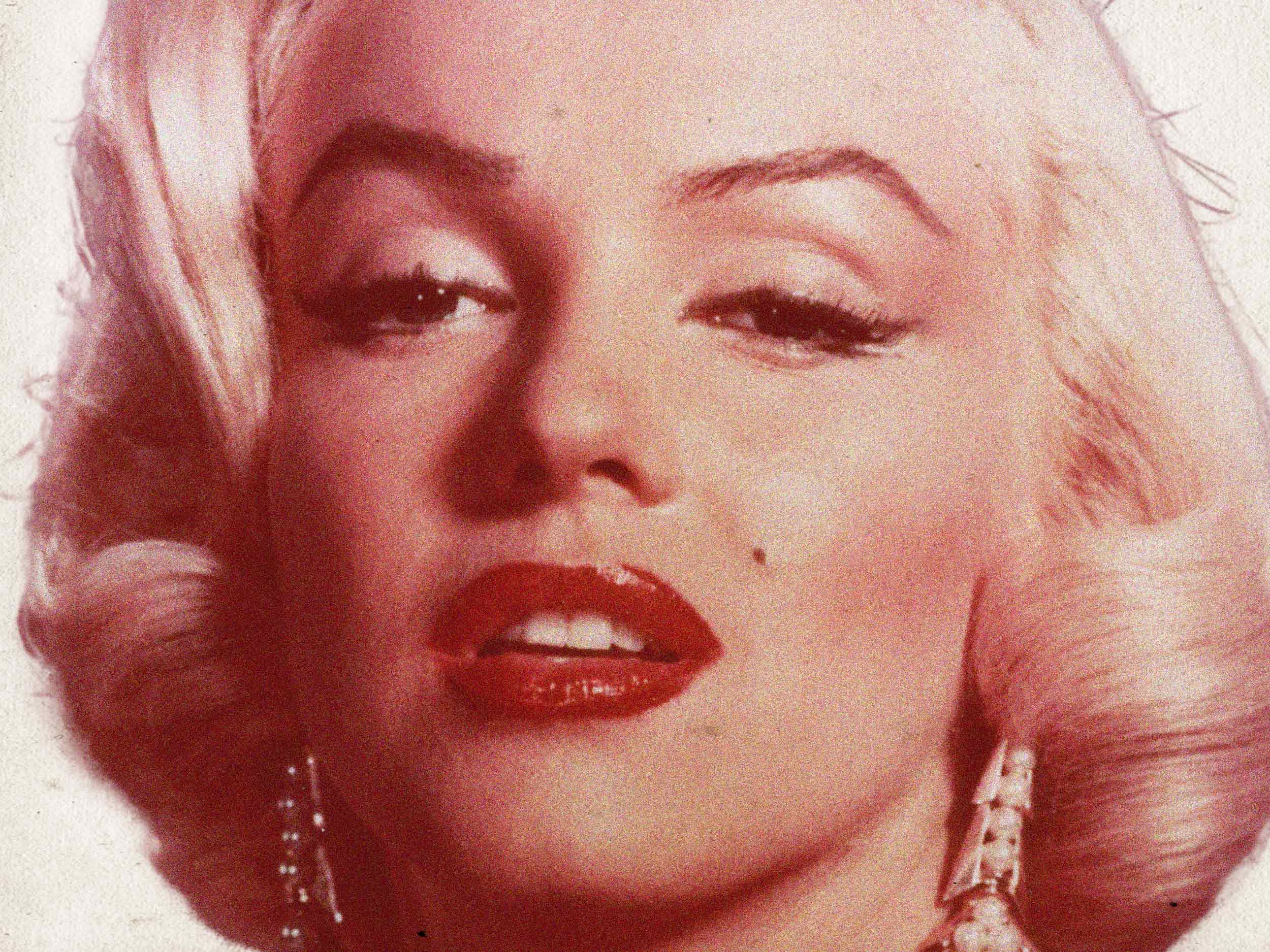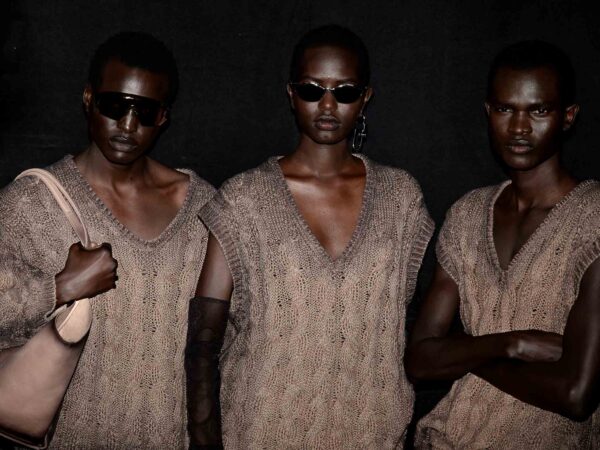“Despite all the horrific abuse that Norma Jean faces, the real tragedy of ‘Blonde’ is that these people got away with fictionalizing a real woman beyond recognition.”
“I was wriggling to get out of my seat,” whispered a woman outside the theater at the 79th Venice Film Festival. We were both coming out of the premier of Andrew Dominik’s Blonde, and judging by what we had just seen, I don’t think this woman was talking about needing to pee. Adapted from Joyce Carol Oates’s novel and starring Ana de Armas as Marilyn Monroe, the psychological drama fictionalizes the super star’s life beyond recognition, and begins just like it ends: with violence.
To catch you up to speed: After a brief glimpse at Norma Jean’s troubling childhood and early modeling career, the film arrives at her “big break” in acting, when she walks into a meeting with a movie exec and is immediately raped. The executive gives Norma her stage name, Marilyn Monroe, and thus begins the prevailing and quickly tiring theme of Blonde—a constant barrage of abuse against the woman it purports to represent.
Fast forward: After an oddly poetic threesome with the sons of Charlie Chaplin and Edward G. Robinson (it’s as confusing to watch as it is to read), Norma Jean finds herself in a happy throuple and pregnant with a child. Yay! She speaks sweetly to her unborn child, an animated fetus floating in amniotic fluid, saying that she believes it “will begin her world anew.” Despite making it clear from the get-go that she feels trapped by her alias of Marilyn, she decides to have an abortion to star in Gentlemen Prefer Blondes. When she changes her mind on the way to the clinic, she is forced to have one anyways. (Whether this was the decision of the doctors or production company isn’t made clear.)
We move on to her marriage with Joe DiMaggio (Bobby Cannavale), which begins as a hopeful escape from the spotlight but ends up as abusive as everything else. When she meets her second husband, famous playwright Arthur Miller (Adrian Brody), he underestimates her intelligence and then is struck by her reading of a character in one of his plays. The two are happy for a while: She gets pregnant again, but then loses the baby after falling.
“In Blonde, there truly is no plot for Norma to move forward—just a progression of romanticized abuse, for which de Armas’s character exists only as a powerless vessel to receive.
At this point it’s clear that, at least structurally, the film organizes itself around the meetings of Norma’s husbands, as if she had no other significant relationships in her life. In the background, Norma’s emotional journey is also taking shape: She struggles with her childhood trauma and the loneliness of being a sex symbol. She desperately wants to have a relationship with her father (she calls both husbands “daddy”), and she truly believes that having a baby will make her happy. Husbands, fathers, babies—if the film could posit that these stereotypical female plot lines were a commentary on “the times,” or on the industry’s history of sexist archetypes, they might be more palatable. But that’s a stretch.
While the people in her life continue to manipulate her and disregard her humanity, it’s the loss of Norma’s second baby with Arthur Miller and the pressure of fame that drive her into deeper psychosis. The performance of said psychosis is certainly one of the film’s strengths. De Armas’ ability to flip from soft-spoken and feminine to screaming and crying is believable and intense. Paired with an emotional and rhythmic synth soundtrack by Nick Cave, one thing you cannot deny is that this film makes you feel something.
Still, the violence continues. Towards the end of the film, Norma Jean flies to New York to meet the president. She is dragged into JFK’s room where she performs oral sex on him while he’s on the phone with an advisor. Afterwards, it’s implied that he violently rapes her, and when she gets pregnant with his baby, Secret Service kidnaps her from her home and forces her to have an abortion under sedation. Why exactly the film required not one, but two forced abortions, is beyond me. As a fictionalized “psychological thriller,” they’re unable to justify this—and the rest of the cinematically purposeless violence—by saying, “Well, that’s just what happened.” You start to question: What does it add, except another layer to the grotesque romanticization of abuse?
Despite all the horrific abuse that Norma Jean faces, the real tragedy of Blonde is that these people got away with fictionalizing a real woman beyond recognition. Between scenes of Norma’s degradation, her love of acting, her intellectualism, and her desire to be happy reach through the trauma porn like hopeful flowers. But it only appears in dialogue. In two hours and 45 minutes, Norma Jean makes no decisions for herself and doesn’t drive the plot forward in any way. In Blonde, things happen to her, and they’re all bad things. Her babies are forcefully or accidentally taken away. While Norma mentions a feeble attempt to look for clues about her father’s identity, her actions in this plot line consist of passively waiting for him to find her as she receives letters from him. Her career starts without her consent via a graphic rape scene, and continues without her consent. Despite this, her desire to live a different life exists again only in dialogue, not action. Outside of episodes of psychosis, where she is subsequently tranquilized, she doesn’t make any moves to take control of her life at all. She is so aggressively passive it is infantilizing. In the end, it seems the only thing she does choose is her own death, which is used as an excuse to neatly end the film. In Blonde, there truly is no plot for Norma to move forward—just a progression of romanticized abuse, for which de Armas’s character exists only as a powerless vessel to receive.
“Despite all the horrific abuse that Norma Jean faces, the real tragedy of Blonde is that these people got away with fictionalizing a real woman beyond recognition.”
Even if the real Marilyn was as powerless as Oates and Dominik’s version, this kind of directionless violence just doesn’t make for good cinema. Yes, you have to fictionalize real life to create something “bigger than” in film. But hyperfocusing on the unrelenting abuse of a powerless character not only makes for a film that is unable to redeem itself—it’s also an insult to a very real and complex woman who, despite the tragedy of her life and death, was so much more than her pain. The real Norma Jean spent her childhood in foster homes, and used the cinema as an escape. That’s what made her want to become an actress. She wrote and contributed to her school newspaper. She worked in a factory where she met a photographer who launched her modeling career. The real Norma’s acting career didn’t begin with assault; she was signed with 20th Century Fox after a standard screen test. Unlike Dominik’s Norma, the real Norma played a huge role in the creation and management of the Marilyn Monroe image—she wasn’t powerless. The real Norma founded her own production company after being underpaid by her old studio, and was the head of a thriving business. Fictionalized or not, biopics should do more than make real-life women powerless objects of pity. And if your defense of the film is, “Well, that’s what the book is about,” maybe they should never have adapted it in the first place.
Like all art that misses the mark, this film actually accomplishes exactly what it positions itself against. In Blonde, a real and powerful woman (who is no longer alive to speak for herself) is reduced to a passive victim. In an attempt to artistically illustrate the horrors of being over-sexualized and stripped of your autonomy, this film ends up doing the exact same thing: It erases the actual power that the real Norma Jean had in her short but marvelous life. The real Marilyn would have read this script and laughed, and then maybe had a drink.


















